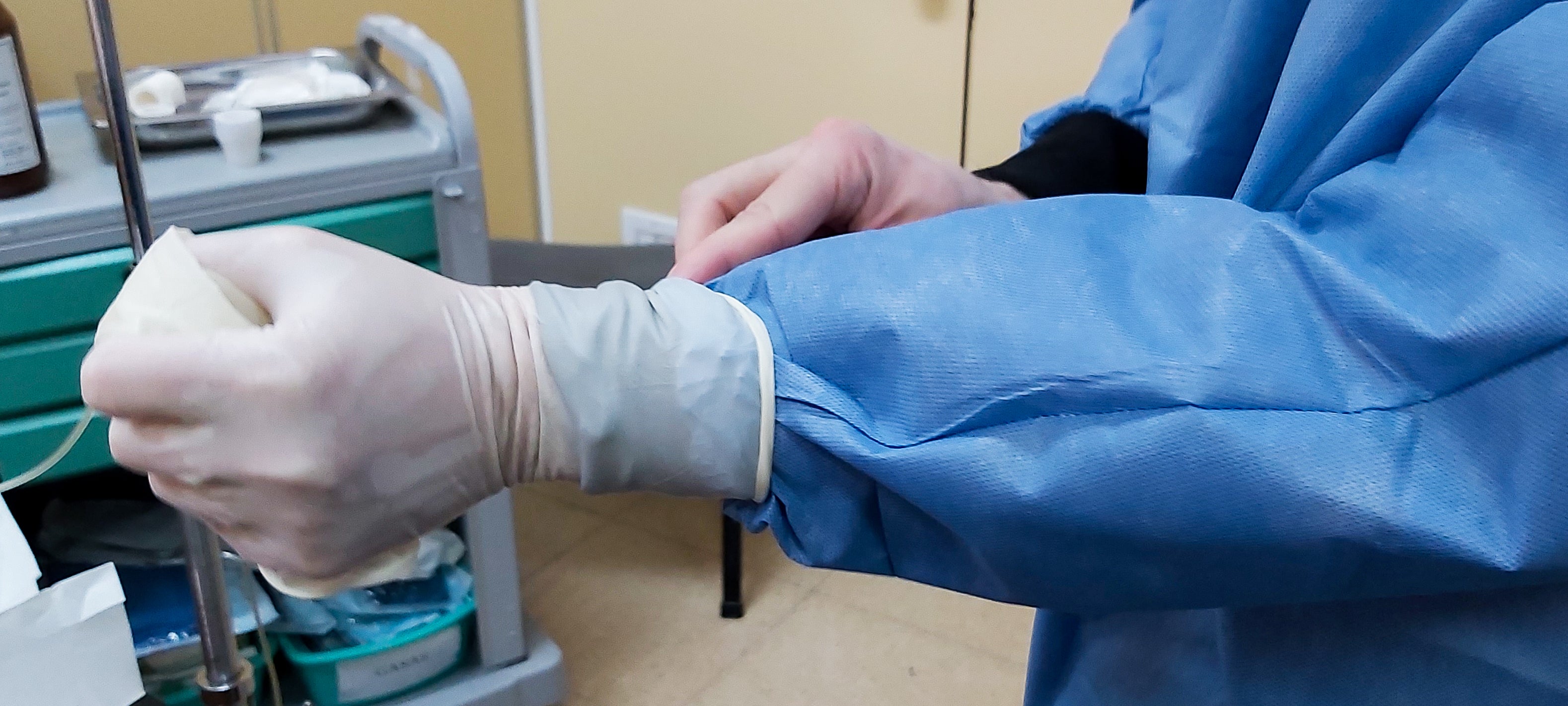In professional environments where protection against contaminants, hazardous fluids, or chemicals is essential, extended cuff disposable gloves provide a higher level of safety than standard-length alternatives. Designed to extend beyond the wrist—sometimes up to the mid-forearm—these gloves offer a protective barrier for high-risk tasks across healthcare, industrial, chemical, and emergency settings.
What Are Extended Cuff Disposable Gloves?
Extended cuff disposable gloves are single-use protective gloves made from materials such as nitrile, latex, or vinyl. Unlike regular disposable gloves that stop at the wrist, extended cuff gloves typically provide 2 to 4 extra inches of coverage. This extra length helps safeguard users from fluid backflow, chemical splashes, or contact with infectious materials that could otherwise seep beneath a wrist cuff.
Key Situations That Require Extended Cuff Protection
1. Medical and Surgical Procedures
In surgical and trauma environments, bloodborne pathogens, bodily fluids, and sharp medical instruments present constant hazards. Extended cuff gloves offer additional coverage to shield forearms, especially when gowns shift or gloves are worn for long durations.
- Examples: Trauma surgery, orthopedic procedures, emergency C-sections
- Preferred materials: Nitrile (puncture-resistant), latex (high dexterity)
2. Laboratory & Biotech Work
Lab technicians handling corrosive acids, reagents, or infectious specimens benefit from the extended splash protection these gloves provide. They’re especially important in BSL-3 or BSL-4 lab environments.
- Examples: DNA extraction, pathogen handling, chemical titration
- Compliance: ASTM D6978 chemo-drug resistance
3. Industrial & Automotive Maintenance
In automotive, aerospace, and manufacturing settings, workers are frequently exposed to solvents, oils, adhesives, and greases that can seep past short cuffs.
- Examples: Oil changes, brake service, fluid transfer
- Recommended thickness: 6–8 mil nitrile
4. Hazardous Materials Handling
Firefighters, hazmat teams, and industrial cleaners rely on long-cuff gloves when encountering chemical spills, biohazard waste, or toxic particulates.
- Required protection: ANSI/ISEA 105, ASTM F739
- Layering: Over or under sleeves depending on exposure type
5. Dental, Mortuary, and Tattoo Professions
Professionals working near bodily fluids—especially those at risk of aerosol spray—choose extended cuffs to reduce exposure risks.
Extended Cuff vs. Standard Disposable Gloves
| Feature | Standard Gloves | Extended Cuff Gloves |
|---|---|---|
| Length | Wrist only (~9.5") | Up to 12"–14"+ |
| Coverage | Hands only | Hands + Lower Forearms |
| Protection Level | Moderate | High (splash, backflow) |
| Ideal Usage | Low risk tasks | High-risk exposure zones |
| Cost | Lower | Slightly higher |
Materials: Choosing the Right Extended Cuff Glove
Nitrile
- Benefits: Chemical and puncture resistant, latex-free
- Ideal for: Labs, medical, industrial tasks
Latex
- Benefits: Flexible, sensitive touch
- Risks: Allergen for some users
Vinyl
- Benefits: Economical, latex-free
- Limitations: Less durable, less tactile feel
Certifications and Compliance Standards
- OSHA 29 CFR 1910.138 – Mandates hand PPE when exposed to hazards
- FDA 510(k) – Required for medical-grade examination gloves
- ASTM D6978 – Chemo drug resistance
- EN 374 – European chemical resistance classification
How to Use and Dispose of Extended Cuff Gloves
Before Use
- Inspect for tears or defects
- Choose appropriate size and material
During Use
- Position cuffs under or over sleeves
- Avoid touching face or skin
After Use
- Remove gloves safely by peeling from cuff
- Dispose of in accordance with hazardous waste protocols
- Wash hands thoroughly
Layering Tips for High-Risk Situations
In hospitals and chemical environments, professionals often double-glove. The extended cuff glove acts as the outer layer while thinner inner gloves provide flexibility. Tape the cuff to gown sleeves to prevent exposure from gaps.
Storage and Shelf Life
- Store between 59°F–86°F (15–30°C)
- Keep away from moisture, ozone, or sunlight
- Do not bend or crush cuffs in storage
Recommended Products
Pair with:
FAQs
Q: Are extended cuff gloves reusable?
A: No. They are single-use only.
Q: Can I use them for food handling?
A: Yes. Use FDA-approved vinyl or nitrile gloves.
Q: Best for chemical safety?
A: 8+ mil nitrile gloves with ASTM F739 rating.
Q: How do I know if gloves are medical grade?
A: Look for FDA 510(k) clearance or "exam grade" labels.
External Resource
For authoritative safety guidelines on PPE and hand protection, visit the OSHA Personal Protective Equipment page.
Conclusion
Extended cuff disposable gloves offer vital protection in healthcare, industrial, and hazardous settings. They shield forearms from exposure, enhance compliance, and reduce the risk of contamination. Select gloves that match your task, environment, and regulatory needs for maximum protection and performance.
Shop high-quality OSHA-compliant extended cuff gloves at eSafetySupplies.com.

